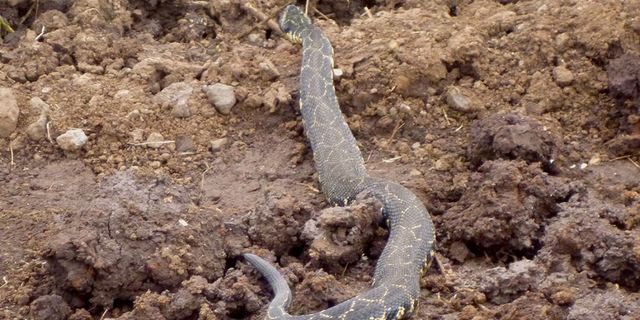While driving on the streets of Ethiopia’s Bale Mountains National Park in 2013, a group of U researchers saw a snake.
Curious, they pulled over to further investigate and tried to classify the snake. They couldn’t match it with anything in a book they had on hand, however. Not thinking anything of it, PhD students Evan Buechley and Mark Chynoweth snapped a few photos and sent them to the author of the book. The author, too, was puzzled. As it turns out, no one had identified this reptile before.
“[We] were simply shocked to see such a large snake in a dense tropical forest,” Chynoweth said. “It was truly an awe-inspring moment to see something so special in the wild.”
The pictures were researched, and the snake was matched to a similar museum specimen in Copenhagen. Two years later, the U students were told they had discovered a new species called Bitis harenna.
A meter long, Bitis harenna is said to have been seen only once. It is part of the Bitis family, all of which are venomous, and researchers say it is likely to have a lethal bite. Since the initial sighting, teams have spent thousands of hours searching and have made little progress, making it difficult to find out more about the vertebrate.
Habitats of the Bale Mountains National Park is in need of protection due to deforestation. This makes it difficult for researchers to know if the snake is very rare due to hiding.
“[The Harenna Forest] is a likely place to find something new because there has been very little bio work done here,” Buechley said.
Buechley, who is driven by conserving natural places, said the area requires more research and that there are large animals we don’t know about.
“It is very rare to discover a new vertebrate species,” Chynoweth said. “I feel incredibly fortunate to have witnessed this as a member of Evan’s team.”
@SidneyMarchant
















